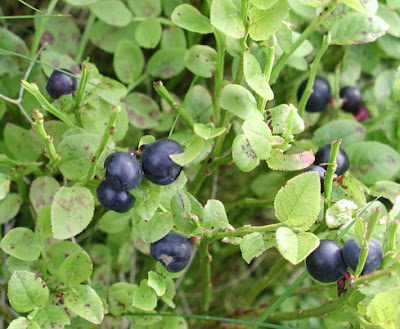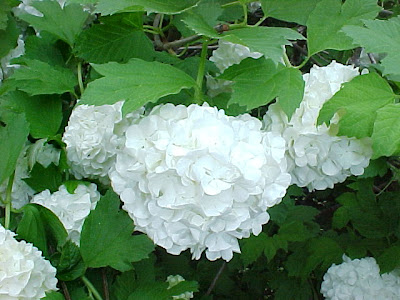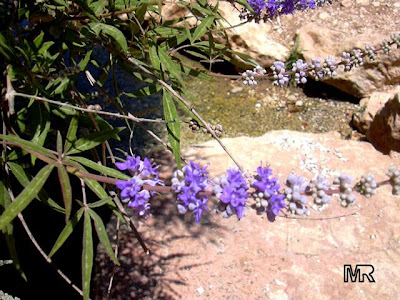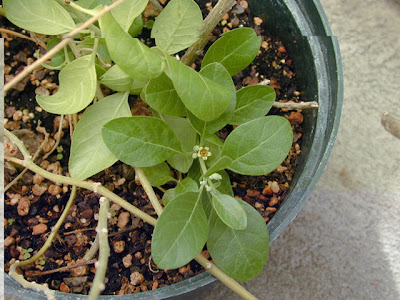A cousin of garden sage, dan shen is the Chinese remedy for heart and circulation, and has been used for over 2,000 years. The root has an impressive range of activity on the cardiovascular system, benefiting conditions such as high blood pressure, poor peripheral circulation, and heart failure.
31.10.09
30.10.09
Willow bark, White willow / Salix alba
An ancient remedy for aches and pains, fevers, and rheumatic conditions, willow bark contains aspirin-like substances. It is often thought of as the herbal equivalent of aspirin, but its mode of action is only partly the same—it cannot be used as a straightforward aspirin replacement.
Bilberry, Blueberry / Vaccinium myrtillus
29.10.09
Valerian / Valeriana officinalis
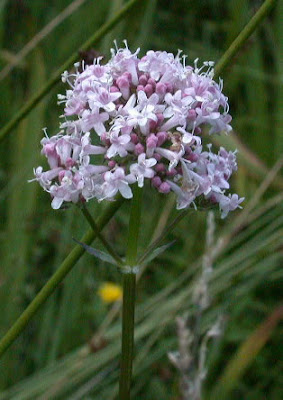 Used wherever nervous tension, overactivity, or an inability to relax are present, valerian’s gently sedative action helps to soothe and slow a nervous system that is beginning to spin out of control. It is one of the first herbs to consider when a remedy is needed to ease anxiety and panic attacks.
Used wherever nervous tension, overactivity, or an inability to relax are present, valerian’s gently sedative action helps to soothe and slow a nervous system that is beginning to spin out of control. It is one of the first herbs to consider when a remedy is needed to ease anxiety and panic attacks.
28.10.09
Linseed, Flax - medicinal uses
Part used Seed
Key actions Antioxidant • Demulcent • Estrogenic • Laxative • Nutritive
Food supplement, menopausal symptoms Ground or cracked seed (untreated seed is not absorbed) makes an excellent addition to the diet: take 1–2 tablespoons a day with muesli, breakfast cereal, or yogurt. Since the seed soaks up large quantities of liquid, drink a large glass of water at the same time. The a-linoleic acid and omega-3 oil content in the seed is similar to fish oils, although less biologically available. High levels of phytoestrogens make linseed a useful supplement for menopausal symptoms such as hot flashes and headache. Store ground or cracked seed in an airtight container in the refrigerator to prevent the seed oils going rancid. Use within two to three weeks.
Digestive problems An excellent bulk laxative, linseed is a safe and frequently effective remedy for chronic constipation. Soak 1 tablespoonful of seed in at least 5 times its volume of warm water. Leave for a few hours, then swallow, preferably drinking additional water. The resulting jelly-like brew will often prove helpful for constipation and can also relieve acid indigestion and diarrhea. Long-term problems such as acid reflux and esophagitis, peptic ulcer, and chronic constipation are likely to need ongoing treatment with linseed.
27.10.09
Raspberry - medicinal uses
Part used Leaf
Key actions: Aids preparation for childbirth • Antidiarrheal • Astringent
To aid preparation for childbirth Take raspberry leaf as an infusion or capsule on a daily basis for the last three months of pregnancy, and freely during labor to ease contractions. The normal daily dose is 1–2 cups of tea.
Heavy menstrual bleeding Raspberry leaf can help control heavy menstrual bleeding, combining well with yarrow (Achillea millefolium) to reduce blood loss. It is sometimes taken to relieve premenstrual symptoms and period pains.
Other uses With its strong astringent action, an infusion of the leaves makes a gentle-acting and effective remedy for diarrhea and loose bowel movements in children. It is equally useful as a gargle for sore throats and a lotion for sore eyes.
26.10.09
Other uses of Birch
favorite Scandinavian remedy, birch twig bundles are used in saunas and steam baths to penetrate the skin and muscles in order to stimulate sweating, invigorate, and relieve tender and aching muscles. Birch oil, extracted from the leaves and twigs, is a traditional northern European product, commonly used in external applications for rheumatic aches and pains.
25.10.09
Vervain / Verbena officinalis
24.10.09
Cramp bark, Guelder rose / Viburnum opulus
23.10.09
Heartsease, Wild pansy / Viola tricolor
22.10.09
Mistletoe / Viscum album
21.10.09
Chaste berry / Vitex agnus-castus
20.10.09
Medicinal uses of Birch
Parts used Bark: Leaf
Key actions: Anti-inflammatory, Astringent, Diuretic, Mild analgesic
Rheumatic and kidney problems Birch’s unusual combination of actions makes it a valuable remedy in conditions where symptoms reflecting kidney weakness—poor urine output, fluid retention, and puffiness—occur side by side with rheumatic problems such as stiff and aching muscles, arthritic pain, and leg cramps. By aiding the clearance of waste products in urine, birch leaves increase the body’s ability to remove waste products from joint and muscle tissues. The leaves contain aspirin-like substances which contribute to their ability to control inflammation and relieve pain. Traditional uses of birch include rheumatic pain, gout, fibromyalgia, and kidney and urinary tract infections such as cystitis. A warm decoction of the leaves and twigs can be applied to ease stiff and aching muscles. The sap is thought to have diuretic properties.
19.10.09
Medicinal uses of Boswellia
Part used Resin
Key actions: Anti-inflammatory • Anti-arthritic • Antiseptic • Reduces fever
Arthritic problems Boswellia is fast becoming one of the most commonly taken medicines for arthritic problems. Concerns over the safety of conventional anti-inflammatories have increased interest in herbal alternatives, and in boswellia’s case, there is a significant and growing body of research that indicates both its safety and effectiveness. The specific anti-inflammatory action of the resin makes it an important remedy for chronic inflammatory conditions such
18.10.09
Medicinal uses of Buchu
Part used Leaf Key action Urinary antiseptic Urinary tract infection Buchu is used specifically for cystitis and infection in the urinary tract as a whole, since its essential oil has marked antiseptic activity. The herb is best taken as an infusion and is probably most effective when used shortterm for acute infections. Other herbs such as cranberry (Vaccinium macrocarpon) may be better for chronic conditions.
14.10.09
Linseed, Flax / Linum usitatissimum
Raspberry / Rubus ideaus
13.10.09
Boswellia / Boswellia serrata
12.10.09
Birch
 The birch tree has a long history of use in northern temperate regions of the world. Birch tar oil, distilled from the bark, is a traditional treatment for chronic skin diseases. The leaves are used in kidney and rheumatic disorders, and the sap, tapped early spring, is taken as a refreshing and cleansing tonic.
The birch tree has a long history of use in northern temperate regions of the world. Birch tar oil, distilled from the bark, is a traditional treatment for chronic skin diseases. The leaves are used in kidney and rheumatic disorders, and the sap, tapped early spring, is taken as a refreshing and cleansing tonic.
Buchu / Barosma betulina
11.10.09
Grape vine / Vitis vinifera

Grapes have astringent, laxative, and tonic qualities, and are almost universally recommended for convalescence—flowers and grapes are the gifts onebrings to the ill and infirm. Traditionally, grapes are used to cool fevers and, as part of a grape fast, promote tissue cleansing.
9.10.09
Oregon grape
8.10.09
Wild indigo root / Baptisia tinctoria
Bacopa / Bacopa monniera
6.10.09
Neem / Azadirachta indica
5.10.09
Oats / Avena sativa
Withania, Ashwagandha / Withania somniferum
Astragalus / Astragalus membranaceus
This remarkable herb has been used in Chinese herbal medicine for over 2,000 years, and scientific research is beginning to confirm (and to some degree, extend) its range of uses. Astragalus is a safe remedy, often helpful in cases of chronic infection.
4.10.09
Prickly ash / Zanthoxylum clava-herculis
1.10.09
Burdock / Arctium lappa
Cornsilk, Maize fronds / Zea mays
Celery / Apium graveolens
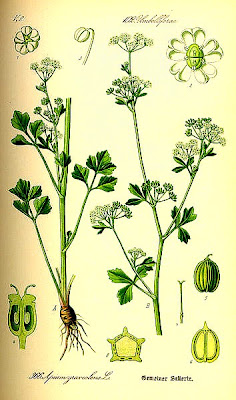
A good detoxification remedy, celery stem, leaf, and seed stimulate the kidneys to clear waste products, especially helping to cleanse salts that accumulate in joints, causing stiffness and inflammation. Although celery today is considered to be a mild sedative, in earlier times it was believed to be an aphrodisiac.
Angelica / Angelica archangelica

The botanical name of angelica points to the highly prized status of this northern European herb in the past. A warming tonic that is good for both poor digestion and weak circulation, angelica is also an excellent remedy to support recovery from chronic illness and to revitalize a delicate digestive system.
Subscribe to:
Posts (Atom)
